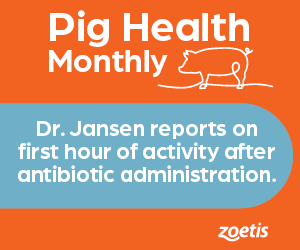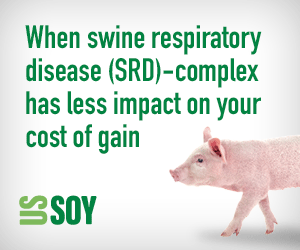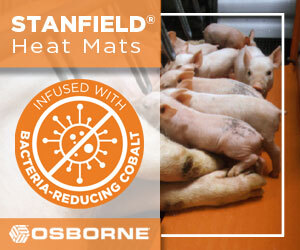



AASV: Eradication of classical swine fever in the US
A combination of science and government/industry collaboration resulted in the eradication of classical swine fever[Editor's note: The following is from a presentation by Jeff Zimmerman, DVM, PhD, Department of Veterinary Diagnostic and Production Animal Medicine, Iowa State University, during the 2024 annual conference of the American Association of Swine Veterinarians.
Between 1884 and 1913 classical swine fever virus (CSFV) killed approximately 7.5% of the total US swine population annually. In 1903, Bureau of Animal Industry (BAI) scientists Edward A. de Schweinitz and Marion Dorset proved the viral etiology of the disease. Dorset, W.B. Niles and C.N. McBryde then developed a procedure to protect swine against CSFV by simultaneously administering virus and antibody – defibrinated blood from an acutely infected pig and serum from a recovered pig – as previously described in 1898 for rinderpest.
The simultaneous method remained the standard until the first licensed modified live virus (MLV) vaccine appeared on the market in 1951. Even so, a 1961 study estimated annual CSFV losses to US producers at $592.6 million (adjusted to 2023 dollars).
Animal health organizations and the United States Animal Health Association (USAHA), in particular, have played a major role in US animal health initiatives. The first annual meeting of the USAHA (then called the Inter-State Association of Live Stock Boards) was held in 1897. The USAHA first called for the eradication of hog cholera in 1907, just 4 years after the discovery of the virus. This was followed by the organization of a “hog cholera” control committee in 1921 and a renewed call for eradication by the USAHA in 1926. In 1950, the USAHA organized the National Committee on the Eradication of Hog Cholera and, in 1956 the Committee held regional workshops and promoted a ten-point CSFV control plan. Legislation introduced into Congress for a national eradication program was passed and signed by President Kennedy on September 6, 1961 (Public Law 87-209).
Tools for eradication
The knowledge base with respect to CSFV at the beginning of the eradication program was generally adequate. That is, a great deal was known regarding the natural history of CSFV including routes of transmission, the presence of persistent carriers, reservoirs, and potential vectors.
The one area of noticeable weakness was in diagnostics. H.W. Dunne in 1958 commented that “no completely satisfactory laboratory test is presently available for use in hog cholera diagnosis” and some argued that the eradication program should wait until a definitive diagnostic assay was developed.
In the program, CSFV-suspect herds were identified based on clinical signs – not routine surveillance. BAI veterinarians evaluated herd history, clinical signs, pathological lesions and hematology on the farm to arrive at a diagnosis. Hematology was initially an important part of the diagnostic process. That is, leukopenia is one of the cardinal signs of CSFV infection and a total leukocyte count of 9,000 or less in pigs 8 weeks of age or older was considered definitive for CSFV infection.
The introduction of the tissue direct fluorescent antibody technique in June 1964 (visualization of CSFV antigen in tonsil tissue) was a big step forward in CSFV diagnosis. All states were enrolled in the program by 1966. Vaccination was prohibited in 1969. The last isolation of CSFV was made in 1976 from a herd in New Jersey. On January 31, 1978 (16 years after initiation), the US was declared CSFV-free.
In the CSFV program, sampling was done in herds where there were clinical signs suggestive of CSFV. In suspect herds, all pigs in the herd were sampled (“whole herd” or census sampling) and tested. Census sampling was feasible in the CSFV program because the average herd held around 50 pigs at that time.
CSFV eradicated
CSFV eradication was successful because of:
- Strong, long-term industry support and effective federal-state-industry collaboration.
- A substantial scientific understanding of the natural history of CSFV.
- The availability of diagnostically sensitive and specific tests.
- Willingness to apply new concepts.
This program fit the industry of its time because it was designed by people close to the industry. In 1960, the inception of the CSFV eradication program, there were 640,000 small farms in the US run by family members and mostly raising pigs outdoors. And the program worked for them. Since then, the US swine industry has transitioned to larger, multi-site, specialist (breeder or finisher) operations. The processes that worked to eradicate CSFV on small-scale farms will not work on the 65,000 swine farms of 2024.

















